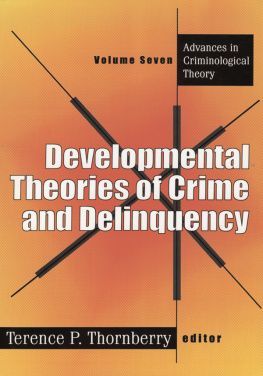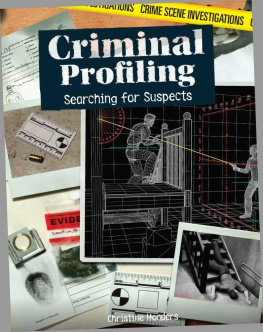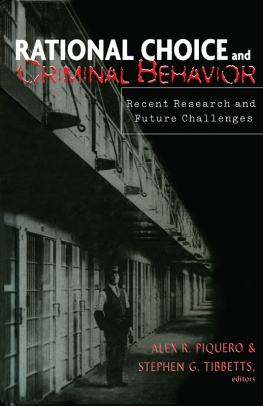Nathaniel J. Pallone - Criminal Behavior
Here you can read online Nathaniel J. Pallone - Criminal Behavior full text of the book (entire story) in english for free. Download pdf and epub, get meaning, cover and reviews about this ebook. year: 1994, publisher: Transaction Publishers, genre: Science. Description of the work, (preface) as well as reviews are available. Best literature library LitArk.com created for fans of good reading and offers a wide selection of genres:
Romance novel
Science fiction
Adventure
Detective
Science
History
Home and family
Prose
Art
Politics
Computer
Non-fiction
Religion
Business
Children
Humor
Choose a favorite category and find really read worthwhile books. Enjoy immersion in the world of imagination, feel the emotions of the characters or learn something new for yourself, make an fascinating discovery.

- Book:Criminal Behavior
- Author:
- Publisher:Transaction Publishers
- Genre:
- Year:1994
- Rating:5 / 5
- Favourites:Add to favourites
- Your mark:
Criminal Behavior: summary, description and annotation
We offer to read an annotation, description, summary or preface (depends on what the author of the book "Criminal Behavior" wrote himself). If you haven't found the necessary information about the book — write in the comments, we will try to find it.
Crime Statistics suggest that Americans are not a notably law-abiding people. With some 13 million felonies reported every year, it is not surprising that few topics engage public attention and imagination more compellingly than the dynamics of criminal behavior. Volume and ubiquity alone might suggest the psychology of criminal behavior is well understood and there exists an integrated body of explanatory theory and empirical evidence. But in fact only fragmentary and incomplete accounts have thus far appeared. Criminal Behavior is virtually unique in providing a comprehensive psychological paradigm that fits across variant species of crime, while meeting the requirements of science and the needs of law enforcement and administration of justice in controlling criminal behavior.
The authors begin this remarkable text by outlining a model for criminal behavior based not on abnormal psychology but on the tenets of social learning theory. They illuminate the processes by which criminal activity is initiated and repeated, including personal constructs, stimulus determinants, and behavioral repertoires. They define four process elements that interact in precipitating criminal behavior-inclination, opportunity, expectation of reward, expectation of impunity. They show how these process elements are regulated and confined by a series of complex and variable boundary conditions in specific criminal offenses. Conceptual, methodological, and operational constraints on the study of criminal behavior are defined, and statistically and behavioral science data bearing upon larceny and homicide, two crimes at diametric extremes, are examined in detail.
Pallone and Hennessy locate and define those psychological variables that render comprehensible the process whereby formally criminal acts are construed as possible and desirable by individual actors and show how those actors self-select psychosocial environments that facilitate or at least do not impede the commission of crime. They identify and explain the phenomenon of tinderbox violence.
Its comprehensive perspective and balanced consideration of competing viewpoints make Criminal Behavior an ideal text for students and teachers of criminology and of the psychology of criminal behavior. It is also a pioneering work for psychologists, sociologists, criminologists, and law-enforcement official.
Nathaniel J. Pallone: author's other books
Who wrote Criminal Behavior? Find out the surname, the name of the author of the book and a list of all author's works by series.





